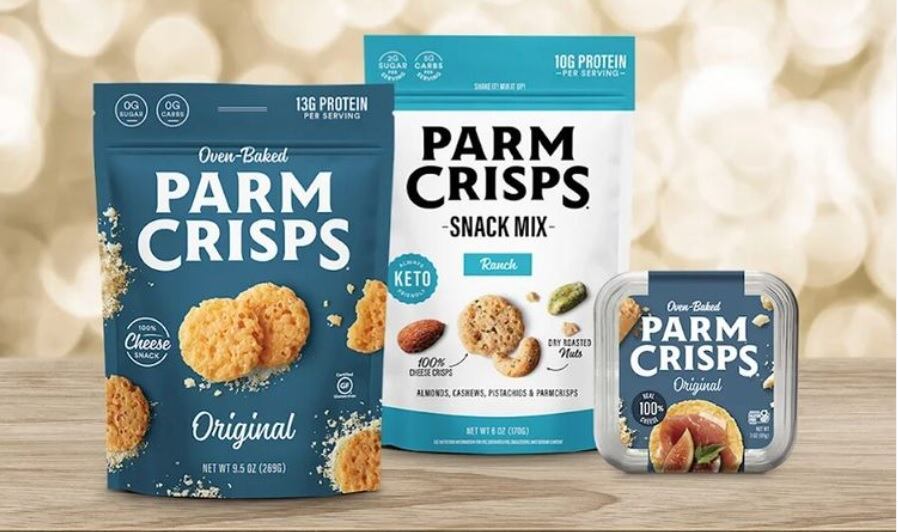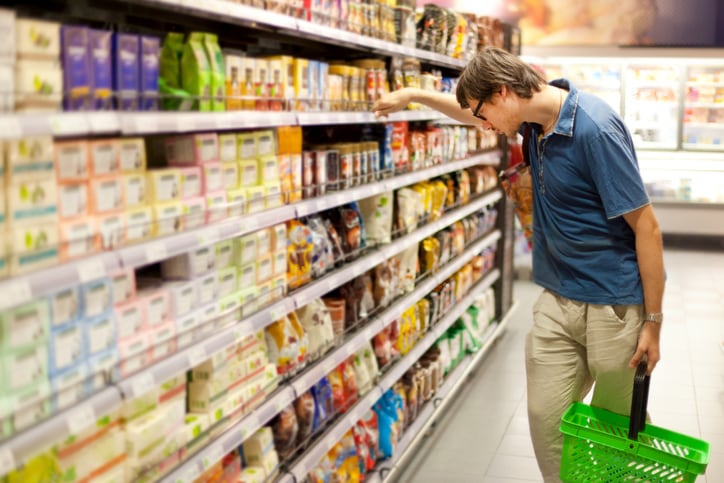The $259m acquisition of ParmCrisps and Thinsters maker That’s How We Roll Dec. 28 “fits perfectly” with “Hain 3.0,” which aims to become a “bigger fish” in the better-for-you snack, dairy alternative and meat alternative categories, Schiller said at ICR Strategic Communications & Advisory’s annual conference Jan. 10.
“ParmCrisps, in particular, fits perfectly with that vision as it gives us another leg on the stool in snacks. It’s a mid-teens growth business, which will have mid-teens EBITDA margins next year once we get some of the synergies in place and get some of the pricing in place as they haven’t taken pricing yet to cover the inflation,” Schiller said.
The brand also is incremental to the company’s existing portfolio because it plays well as a snack mix in the high-protein, low-carb snack segments against beef jerky and protein bars, but it also doubles as a clean-label salad topper, which opens it to multiple facings, consumers and usage occasions.
As excited as Schiller is about the addition of ParmCrisps and Thinsters, he emphasized multiple times that the company is aggressively looking for additional opportunities in the snack space in the US and the non-dairy space in Canada – noting that these are two “turbocharge” categories that are central to Hain 3.0.
Even though Hain has “plenty of firepower and plenty of capacity” for acquisitions, Schiller noted the timing of future deals is a bit out of the company’s control given the larger macro-economic climate, including supply chain and labor challenges.
Innovation, expanded distribution will drive growth
Hain is not reliant on acquisitions alone to grow the business, according to Schiller. Rather, it also is pushing forward with innovation and expanded distribution, which he said are “inextricably linked” given the current environment.
He explained that during Hain’s “2.0” phase it focused on supporting its retail partners by delivering orders on time and as complete as possible – even if that meant paying a premium to source ingredients or transportation.
“We’re prioritizing service over cost because as a challenger company, we don’t have billion dollar brands. The retailer can live without some of our products. So we’ve got to keep fighting for space and prove to them that we’re hungry and we want it and that we’re reliable. And that has served us well in 2.0 in terms of rebuilding the reputation of the company. For us to be a growth company, we’ve got to keep those relationships strong. So, it’s some short-term pressure on the P&L, but we feel very, very bullish on the medium and long-term,” Schiller said.
He also noted this strategy is paying off because retailers have reached out to Hain about sourcing additional products that could help fill shelf space when other brands and companies were not able to deliver complete orders in a timely fashion do to external circumstances.
Schiller said he also believes this will serve the company well when it introduces new products because retailers will know that they can rely on the business to provide sufficient supply in a timely fashion.
In terms of new product development, Schiller noted that Hain has a “really robust pipeline across tea, snacks and personal care and we’ve got a terrific yogurt innovation coming in that will appear when the category resets in June and July.”
He added that depending on the innovation, he expects the company’s new products will also help Hain access new accounts across channels.
Through these two lenses of innovation and supporting retailers in their time of need, Schiller said he expects that the company will see strong sales growth in the back half of the year as retailers reset categories and make more space available for Hain products as permanent features rather than fill-ins. Likewise, he said, retailers stocking Hain products have been selling out and will need to replenish their inventories soon.
More pricing on the way
While Hain has willingly taken a hit on its margins to ensure steady supply to its retail partners, Schiller acknowledged the company will need to take a second round of pricing in the coming months, but it will focus on brands and channels where it hasn’t yet acted to counter inflation.
“We are now taking a second round of pricing to cover out-of-plan inflation … and it will hit in the third quarter and into the fourth quarter. But we’re trying to take it on different brands and different channels,” he said.
For example, in the first round of price increases the company steered clear of brands that were struggling with supply, but with those challenges now fixed it is in a position to push forward, Schiller said.
“We’re trying very hard to avoid taking a second and third pricing on the same brands in the same customers and so far, we’ve done a pretty good job of that,” he said.
He added that where Hain has taken pricing it has seen very little or no drop in volume as consumers seem willing to pay more for better-for-you products.
“Our consumption is up 11% overall over the last 12 weeks and we’re picking up share in some categories more than other. You have got brands like Sensible Portions that are up 45% versus a year ago and 65% versus two years ago,” he noted, as an example.
Divestitures weigh heavy
As Hain continues to build out its portfolio in the areas where it seems the most promise, it also will continue to divest in segments that are not central to its new strategy, Schiller said.
“We talked about personal care may be at some point a candidate for divestiture,” and possibly a few brands in the UK, including its hot dessert business that don’t fit well with the company’s new strategy, he explained.
Hain has already sold several brands that are not central to its new core target areas, including its North American non-dairy beverages brands Dream and Westsoy, and its UK-based fruit business Orchard House.
“The good news is all these brands are profitable, so we’re not going to give them away. We want to make sure we get fair value for them,” he added.




